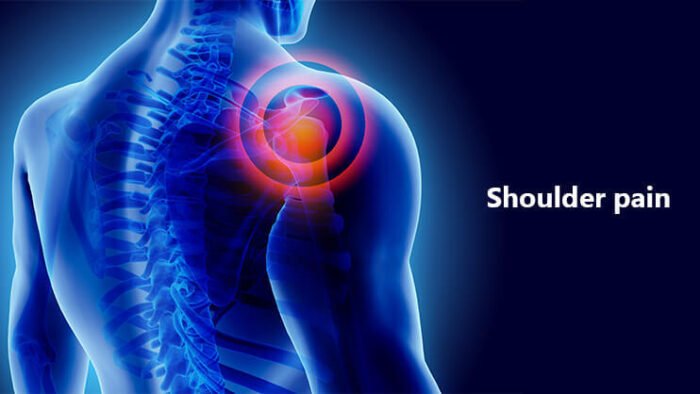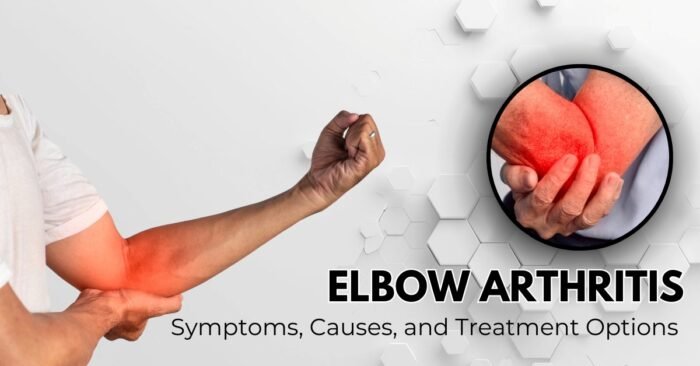What is shoulder arthritis?
Inflammation in the shoulder joint is known as shoulder arthritis. Pain and stiffness are caused by inflammation. Lifting your arm is uncomfortable because of it.
Your shoulder’s primary joint is a “ball and socket” joint. It is the area on the edge of your shoulder blade (scapula) where the hollowed-out cup, or “socket,” of your upper arm (humerus) rests. The glenohumeral joint is the name of this joint.
The second joint in your shoulder, the clavicle, is where your collarbone joins the acromion on your shoulder blade. This joint is also susceptible to developing shoulder arthritis. The acromioclavicular joint, or AC joint, is the name given to this joint.
Arthritis causes cartilage loss over time. The tissue that surrounds your shoulder joint’s “socket” and the humeral head is called cartilage.
What are the signs and symptoms of shoulder arthritis?
Each person experiences shoulder arthritis differently. Among the symptoms and indicators are:
• Pain in your shoulder joint: The most typical symptom is this one. Initially, shoulder pain could be limited to activities. As the illness progresses, you could have pain with or without arm movement at any time of day. When you lift heavy goods or after working out, your pain could get worse. If your arthritis is severe, the discomfort could radiate down your arm and possibly to your wrist or elbow.
• Loss of range of motion and stiffness: Your shoulder may become tight and lose its range of motion. Daily activities including getting dressed, taking a shower, driving, or performing chores may become challenging due to these symptoms.
• Grinding, clicking, popping, or cracking in your shoulder joint: These noises are caused by the loss of cartilage, which leaves an uneven surface. The sounds might be painful or not.
• Sleep deprivation: Finding a comfortable sleeping posture is challenging. Any movement of the shoulder could hurt. If you are a back sleeper, place a pillow beneath the elbow on the side that hurts. This maintains a more supported posture for your shoulder. Additionally, it releases all supporting joint structures from strain. Some people find that they can get better at night by sleeping in a recliner.
What causes shoulder arthritis?
Numerous factors can contribute to shoulder arthritis. Among them are:
• Osteoarthritis: This type of arthritis is the most common. This kind of age-related joint disease is known as “wear and tear.” Eventually, cartilage wears away, softens, cracks, flakes, or becomes frayed. As a result, the bones that are hidden beneath the cartilage start to grind or rub against one another. Joint surfaces don’t deteriorate uniformly or at the same rate as your car’s tires.
•Trauma to the shoulder: Any kind of damage to the shoulder’s bones, such as a dislocation, fracture, or strong blow, can harm the cartilage surface.
• Avascular necrosis: Also known as osteonecrosis, this disorder results in the death of a portion of the shoulder’s “ball.” Disease or trauma stops the blood supply to the bone. In the absence of bone support, the cartilage deteriorates and the shoulder joint finally disintegrates.
• Rheumatoid arthritis: This is an autoimmune disease, meaning that the healthy tissues in your body are attacked by your body’s defence mechanism. Your immune system targets the joint and its lining when you have rheumatoid arthritis in your shoulder, which causes the lining to swell. The cartilage eventually suffers damage from the disease process.
How is arthritis of the shoulder diagnosed?
During a physical examination, your healthcare provider will assess the strength and range of motion in your shoulder. Along with your current symptoms, your provider will also inquire about your medical history.
The imaging tests that your provider will order include:
• X-rays: These images display the health of the bones in your shoulders. Although cartilage cannot be seen directly, your healthcare provider can see how much space there is between your shoulder bones. You have lost cartilage if you are very close or touch someone.
Computed tomography (CT) scan: Often ordered for surgical planning, this test shows more detail about the bones in your shoulder joint than X-rays.
• Magnetic resonance imaging (MRI): The soft tissues around your shoulder joint are visible. It might be prescribed by your doctor to examine the rotator cuff tendons.
How is the treatment for arthritis in the shoulder administered?
Medications, lifestyle changes at home, and surgery are available as forms of treatment.
Lifestyle and in-home care
The first line of treatment for shoulder arthritis is typically nonoperative, at-home, and lifestyle modifications. These techniques lessen pain and preserve shoulder mobility.
• Exercises for the shoulders: Stretching helps maintain or increase the range of motion. You might be required to see a physical therapist by your provider.
• Changes in activity and way of life: Allow suffering to lead the way. Limit or stay away from sports or daily activities (like lifting large objects) that cause shoulder pain.
• Heat and ice: Use moist heat or ice, depending on what feels better, to lessen pain and inflammation. Put a frozen bag of peas or a reusable frozen cold pad on your shoulder if you prefer to be cold.
Medications:
- Pain and inflammation can be lessened with the use of nonsteroidal anti-inflammatory drugs (NSAIDs), such as naproxen or ibuprofen.
- Analgesics (pain relievers) may be prescribed for pain management.
- In some cases, corticosteroid injections directly into the shoulder joint can provide short-term relief from inflammation and pain.
Physical Therapy:
- Physical therapy exercises can help improve the range of motion, strengthen muscles around the shoulder, and enhance overall joint function.
- Therapists may also use techniques such as heat or cold therapy to manage symptoms.
Prevention
Is it possible to prevent shoulder arthritis?
In general, you can reduce your risk of developing arthritis by Steering clear of tobacco products. Your provider can provide you with information on support services and help you quit using tobacco products. Engaging in non-weight-bearing, low-impact exercise.
Preserving a healthy weight. Following a nutritious diet, like the Mediterranean diet.
Lowering the possibility of joint damage. Limit or stay away from activities that could injure your shoulder.
Consult your physician as soon as symptoms appear. If your shoulder issue is discovered early on, you can learn how to manage your pain, modify or stop certain activities, and stop additional cartilage damage.



